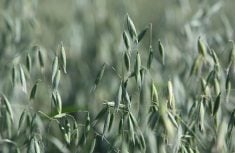Green fallow builds soil
Green fallow is a soil-building practice that should readily fit into the typical short crop rotations used by producers in the semi-arid southern prairie. It should also provide a more sustainable alternative to conventional tilled summerfallow.
Green fallow refers to the practice of growing a short-term (eight-10 weeks) green manure crop during a summerfallow period, for the purpose of working it into the soil in its succulent state. This improves soil tilth and replenishes plant nutrients, especially nitrogen.
Legumes are the main plants used for green manuring because they fix nitrogen from the air, converting it in their root nodules into a form that other plants can use. The legumes can be perennials like alfalfa, biennials like sweetclover or annuals like lentils and peas.
Read Also

VIDEO: Ag in Motion documentary launches second season
The second season of the the Western Producer’s documentary series about Ag in Motion launched Oct. 8.
Green fallow legumes should have the following qualities: Fast emergence to provide early ground cover; high rate of nitrogen fixation; high water use efficiency and resistance to insects and diseases.
Generally, these legumes will be seeded very early in spring into stubble. Preferably, they should be seeded into uniform tall stubble or into cereal stubble cut to leave trap strips to enhance snow capture. In late June or early July, when the legumes reach early to mid-bloom, they are cultivated or disced into the soil, but not buried completely. The green fallow legumes will use water primarily from the top 60 centimetres of soil.
The green fallow legumes are only partially incorporated (or desiccated with a herbicide) because they will provide some surface protection, both to reduce erosion and enhance snow retention during the second winter of the summerfallow period.
Researchers at Swift Current investigated, from 1984 to 1991, several annual legumes for their effectiveness as green fallow crops. Results showed that legumes such as feedpeas and chickling vetch perform extremely well, while lentils and Tangier flatpeas, though useful, were less effective.
The green fallow crops provided marked improvements in soil quality and, on average, wheat yields on green fallow were 12 percent higher than on conventional summerfallow.
Even in drought years, yields were higher with green fallow. Four of the eight years the study was conducted were drought years.
– Agriculture Canada














